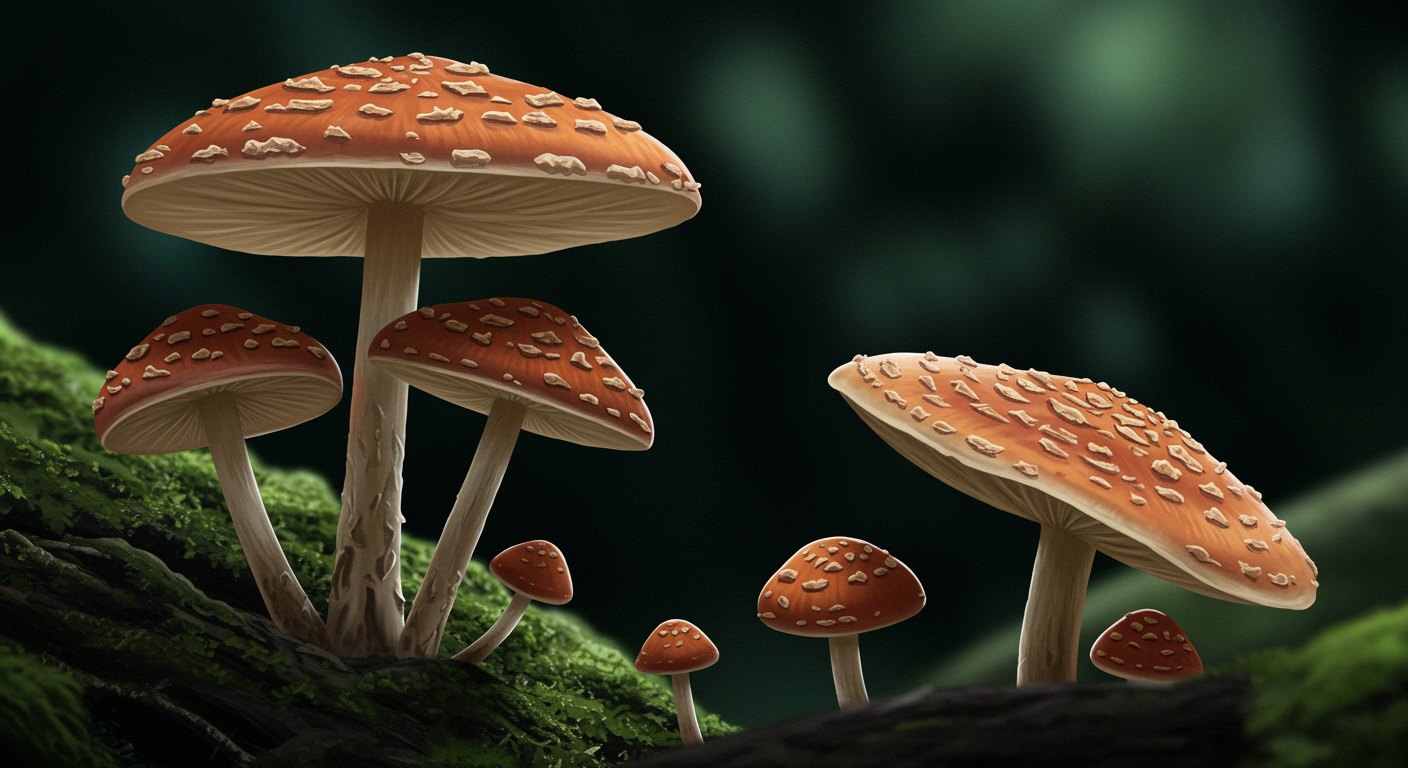
When you envision a forest floor, what comes to mind? Towering trees, lush ferns, perhaps some moss clinging to rocks. And then there are the mushrooms, often pushing through leaf litter, seemingly rooted to the ground. For a long time, their immobile nature and terrestrial presence led us to group them alongside plants. It felt intuitive, a simple visual classification. However, the world of biological classification is rarely as straightforward as our initial impressions suggest. Beneath the surface, the story of fungi takes a truly unexpected turn, revealing a deep kinship that challenges our visual assumptions.
For centuries, the scientific consensus placed fungi squarely in the plant kingdom. Their growth patterns, often fixed in one location, and their general appearance, particularly macroscopic forms like mushrooms, reinforced this idea. We could easily observe how they didn’t chase prey or move around like animals. Their presence in ecosystems often seemed analogous to decomposers in the plant world. This initial categorisation, based primarily on morphology and lifestyle, served its purpose for a time. Yet, as scientific tools evolved, allowing us to peer beyond the superficial, a much more intricate and nuanced picture began to emerge. The true biological identity of fungi, it turns out, is far more complex than simple observation would imply.
The real shift in understanding their place in the biological world began with the advent of advanced genetic sequencing and molecular analysis. When scientists were able to compare the fundamental blueprints of various life forms, the relationships revealed were strikingly different from what appearances suggested. Instead of showing a close genetic affinity with plants, the DNA of fungi exhibited a pronounced similarity to that of animals. This wasn’t a minor correlation; it indicated a deep, shared evolutionary path, pointing to a common ancestor for fungi and animals that lived much more recently than their common ancestor with plants. This profound insight, rooted in the very code of life, fundamentally altered our perception of fungal taxonomy and our understanding of biodiversity.
Consider how organisms obtain their sustenance. Plants are masters of photosynthesis, harnessing sunlight to create their own food—they are autotrophs. Animals, on the other hand, are heterotrophs; they must consume other organisms or organic matter to acquire energy. Fungi, despite their plant-like rooted appearance, fall squarely into the heterotrophic category. They don’t photosynthesize. Instead, they secrete powerful digestive enzymes into their surroundings, breaking down complex organic molecules externally, and then absorbing the resulting smaller compounds. This method of acquiring nutrients, digesting first and then absorbing, bears a far greater functional resemblance to how animals process food than to the photosynthetic independence of plants. It’s a critical difference in their fundamental metabolism.
Beyond their feeding strategies, several other biochemical characteristics underscore the animal-fungi connection. For instance, both fungi and animals store their excess energy in the form of glycogen, a complex carbohydrate. Plants, by contrast, typically store their energy as starch. This shared biochemical pathway for energy reserves is a significant indicator of relatedness, suggesting a common metabolic heritage. Furthermore, consider their cell walls. Plant cells are encased in rigid walls primarily constructed from cellulose. Fungal cell walls, however, are largely composed of chitin. If that name sounds familiar, it’s because chitin is also the primary structural component of the exoskeletons of insects and other arthropods. This shared use of chitin is a powerful structural parallel, a robust biochemical trait present in the animal kingdom, but conspicuously absent in plants.
Tracing back the evolutionary tree further reveals the deep roots of this connection. The group that encompasses both animals and fungi is known as the opisthokonts. This clade represents a monophyletic group, meaning all its members share a single common ancestor. This ancient lineage, characterized by a posterior flagellum (a whip-like tail for movement) in its ancestral single-celled forms, diverged from the lineage that would eventually give rise to plants much, much earlier. So, while fungi and animals took separate evolutionary paths to become the diverse organisms we know today, their ancestral split from plants occurred significantly further back in time. Understanding this shared deep past helps solidify their placement in the grand tapestry of life.
This revelation about fungal ancestry isn’t merely an academic detail for taxonomists. It profoundly impacts how we understand ecosystems, disease, and even the future of biological research. Fungi, far from being simple, static organisms, play crucial roles ranging from decomposition and nutrient cycling to forming mycorrhizal relationships with plants that are essential for forest health. They are also sources of antibiotics, like penicillin, and play roles in fermentation for food production. Understanding their true biological lineage allows us to better appreciate their complex adaptations and their interconnectedness with the animal world, from mutualistic relationships to parasitic interactions. They are not just ‘plant-like’ but occupy a unique and dynamic position in the web of life.
So, the next time you encounter a mushroom poking through the forest floor, or see mold growing on forgotten food, remember that you’re not just looking at a curious plant-like organism. You’re observing a member of a kingdom that, despite appearances, shares a much more intimate evolutionary history with us, and indeed, with all animals. This fundamental biological truth—that fungi are closer relatives to animals than to plants—invites us to look beyond superficial similarities and appreciate the intricate, often surprising, paths life has taken. It underscores the power of scientific inquiry to continually refine our understanding of the world, reminding us that nature’s deepest secrets are often hidden in plain sight, waiting for us to delve a little deeper.